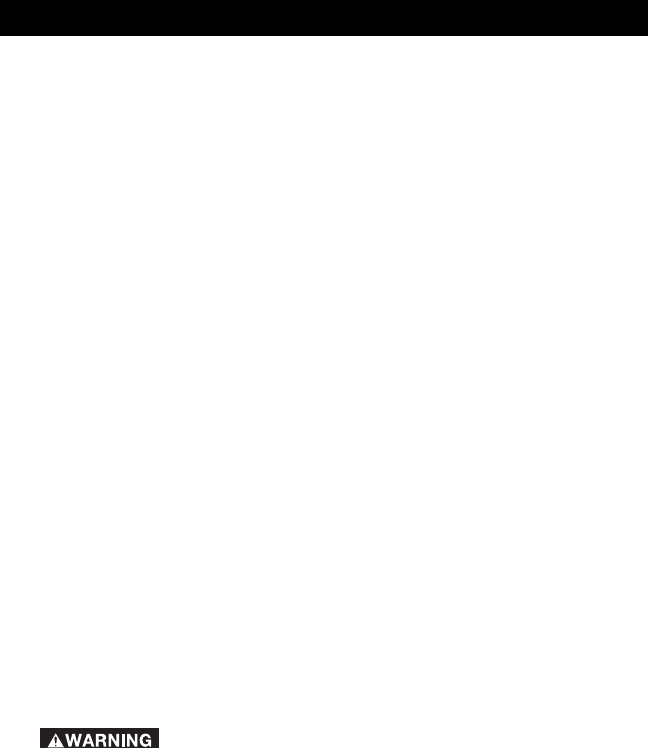
6
ADDITIONAL SPECIFIC SAFETY RULES
1. HOLD POWER TOOLS BY INSULATED GRIPPING SURFACES WHEN
PERFORMING AN OPERATION WHERE THE CUTTING TOOL MAY
CONTACT HIDDEN WIRING OR ITS OWN CORD. Contact with a "live"
wire will make exposed metal parts of the tool "live" and shock the operator.
2. USE CLAMPS OR OTHER PRACTICAL WAY TO SECURE AND
SUPPORT THE WORKPIECE TO A STABLE PLATFORM. Holding the
work by hand or against your body is unstable and may lead to loss of
control.
3. DISCONNECT TOOL FROM POWER SOURCE before making
adjustments or changing bits.
4. TIGHTEN COLLET NUT securely to prevent the bit from slipping.
5. USE A CLAMP or some other device to hold the workpiece rigidly in position.
and clear the path of the tool of obstructions.
6. CHECK TO SEE THAT THE CORD will not “hang up” during trimming
operation.
7. CLEAR THE TRIMMER BIT AREA before starting motor.
8. MAINTAIN FIRM GRIP on trimmer to resist starting torque.
9. KEEP HANDS CLEAR OF CUTTER when motor is running to prevent
personal injury.
10. KEEP CUTTING PRESSURE CONSTANT. Do not overload motor.
11. LET THE MOTOR COME TO A COMPLETE STOP before putting the tool
down.
12. NEVER TOUCH router bits after use. They may be extremely hot.
13. NEVER TIGHTEN COLLET NUT without a bit.
14. DO NOT USE LAMINATE TRIMMER MOTOR WITHOUT THE LAMINATE
TRIMMER BASE INSTALLED. Loss of control could result, causing
personal injury or damage to work.
15. WEAR EYE AND HEARING PROTECTION. ALWAYS USE SAFETY
GLASSES. Everyday eyeglasses are NOT safety glasses. USE CERTIFIED
SAFETY EQUIPMENT. Eye protection equipment should comply with ANSI
Z87.1 standards. Hearing equipment should comply with ANSI S3.19
standards.
16.
USE OF THIS TOOL CAN GENERATE AND DISBURSE
DUST OR OTHER AIRBORNE PARTICLES, INCLUDING WOOD DUST,
CRYSTALLINE SILICA DUST AND ASBESTOS DUST. Direct particles
away from face and body. Always operate tool in well ventilated area and
provide for proper dust removal. Use dust collection system wherever
possible. Exposure to the dust may cause serious and permanent
respiratory or other injury, including silicosis (a serious lung disease),
cancer, and death. Avoid breathing the dust, and avoid prolonged contact
with dust. Allowing dust to get into your mouth or eyes, or lay on your skin
may promote absorption of harmful material. Always use properly fitting
NIOSH/OSHA approved respiratory protection appropriate for the dust
exposure, and wash exposed areas with soap and water.


















